
My Dear Reader,
Since I’m a big Beatrix Potter fan, I was happy to see Beatrix Potter and the Unfortunate Tale of a Borrowed Guinea Pig by Deborah Hopkinson and Charlotte Voake published in time to celebrate Miss Potter’s 150th birthday this year.
I enjoyed the story immensely, but I must confess it reminded me of my own tragic guinea pig experience (*shudder*). But more on that later.
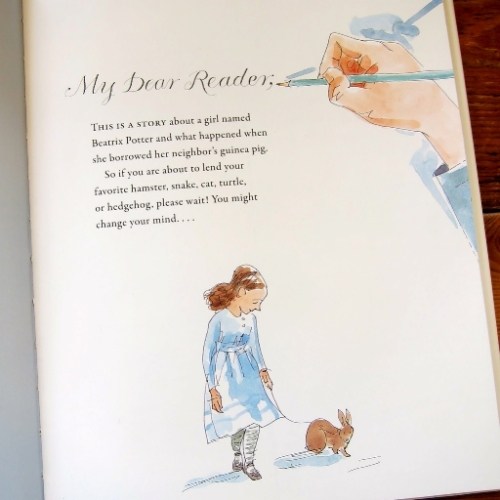
This charming cautionary tale is about the time young Beatrix, who loved to draw and paint wild as well as tame animals, borrowed a guinea pig from her neighbor to use as a live model. She and her younger brother Bertram had lots of pets in the third floor playroom/science lab/art studio of their London home — pets such as snakes, snails, bats, ducks, rabbits, hedgehogs and salamanders. Though Beatrix loved all these creatures, we are warned early on that “she did not always have the best of luck with them.”

We are given evidence of several animal mishaps via journal entries that note an escaped snake and newts, a family of dead and dried up snails, and even a bat which was dismembered by a jay. And what of the unfortunate guinea pig? Beatrix especially loved painting animals doing “ordinary, everyday things, like reading the newspaper, working in the garden, or taking tea. (And why not?).” And the day came when Beatrix just had to paint a guinea pig and they didn’t have one at 2 Bolton Gardens. Not to worry, though, as quite a few of them apparently lived in Miss Paget’s parlor.

Miss Paget was flattered when Beatrix asked to borrow the “truly magnificent” Queen Elizabeth, an impeccable pedigree with enviable highbrow lineage. She was the daughter of Titwillow the Second, and a descendant of the Sultan of Zanzibar and the Light of Asia. Beatrix promised no harm would come to the distinguished Queen as Miss Paget eagerly handed over the regal rodent.
But alas, Dear Reader, this proved to be an empty promise. Though Queen Elizabeth’s sitting went well for awhile, disaster struck when Beatrix was called away to attend a fancy dinner party and left the squealing sovereign to her own devices. The ravenous royal nobly gorged herself on string, paper and paste, which not surprisingly led to her untimely demise. Yea, Queen Elizabeth had made a real guinea pig of herself. Now what?

Absolutely mortified, poor Beatrix offered one of her paintings as a small token of apology when she returned a “stiff and bloated Queen Elizabeth” to a harrumphing, door slamming Miss Paget. Can you blame her?
Now, Ms. Hopkinson, the author of this book and the twinkle-eyed narrator of this tongue-in-cheek Victorian dramedy, poses a good question to her Dear Readers: if you were Miss Paget, would you have kept the painting as a memento of your dear departed pet, or would you have torn it to shreds in anger?

We all know that Beatrix grew up to be a very famous author and illustrator, one of the most beloved in all of children’s literature. And it just so happens that one of her guinea pig paintings, done the same year as this Queen Elizabeth fiasco, fetched a tidy sum in an auction several years ago. I would say £85,400 isn’t too shabby at all.
You have probably guessed that this story is formatted as a picture letter, reminiscent of the picture letter Miss Potter sent to her governess’ son Noel, that ultimately morphed into The Tale of Peter Rabbit. The cover is also designed to resemble the covers of Miss Potter’s 23 little animal tales, and Miss Hopkinson’s whimsical storytelling voice brings to mind Miss Potter’s, especially her use of understated humor and irony.

But it must be mentioned that this is a work of historical fiction, as the guinea pig incident actually took place not when Miss Potter was a child, but when she was 26 years old, and of course the invented dialogue would rule this out as straight biography. All this is duly noted in the Author’s Note, which includes more background info and photos.
Charlotte Voake’s ink and watercolor illustrations are as charming as the narrative. Her loose, fluid lines and use of white space invite the reader to linger over details and let the imagination roam. Readers will like knowing that Beatrix had such an interesting indoor menagerie, and that she started drawing and painting in earnest at such an early age. They might question the wisdom of keeping wild animals confined indoors. They will likely appreciate Miss Hopkinson’s advice about lending a favorite pet to a friend or acquaintance. Think twice about it, and if you do, be sure to get a picture because you just never know :).
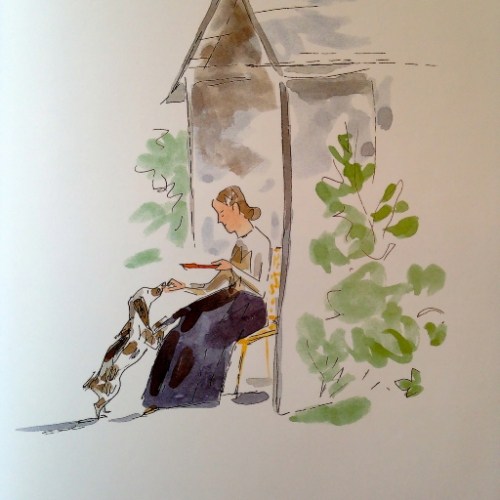
A final Alas of a personal nature, Dear Reader, regarding the responsibility that comes with pet ownership. When I was 9 or 10, I experienced my own guinea pig trauma. After begging my parents, I became the proud owner of two guinea pigs of unknown gender. They weren’t caged, but rather housed in make-shift luxury — a series of cardboard boxes cut and joined together to form rooms and hallways. Just like Beatrix, all was well at the beginning, but after a few weeks — gasp! — irresponsible me forgot to feed and look in on my charges.
Imagine our surprise when we discovered baby guinea pigs one day, a couple of them trampled to death by their parents. Can’t turn your back on them for one minute! I never lived this down. Every time I even so much as mentioned an animal after that, my mother would say, “Remember the guinea pigs?” Lesson learned the hard way.
I think Beatrix’s story will resonate with many young readers. Sometimes the best of intentions fall by the wayside and mistakes are made. There are some reviewers who felt “betrayed” upon learning Beatrix was actually 26 at the time of this incident. They could forgive a child, but not an adult, who should know better. I hesitate to pass judgment, since we’ll never know the exact circumstances. Adults make mistakes too, don’t they?
Beatrix Potter and the Unfortunate Tale of a Borrowed Guinea Pig is a fun read for Potter fans of all ages, and I’m happy to add it to my collection. Visiting Hill Top Farm years ago was truly a magical experience; I’ve been mad for anything Potter related ever since. Now I’m looking forward to several more books being released this Summer and Fall (click on each cover for more info):
Till next time, Dear Readers. (Should you receive any fancy dinner party invitations, consider taking your pets with you.) 🙂
I remain yrs sincerely,
Jama Rattigan
xoxoxxo

P.S. (More guinea pig stuff)
After reading this book, I was curious to learn more about the guinea pig incident. As stated in the Author’s Note, this story was inspired by entries in a journal Beatrix kept from 1881 to 1897 (age 15-30), where she describes several unfortunate mishaps that befell her pets or other wild animals. She wrote in secret code (her journal was later decoded and transcribed by Potter scholar/collector Leslie Linder in 1958).


I found reference to Queen Elizabeth in Beatrix Potter: A Journal, an interesting scrapbook-like compendium that contains lots of vintage photos, facsimiles of letters, postcards, sketches, paintings and other ephemera with cool lift-the-flap features and pockets (this book is not to be confused with Leslie Linder’s actual transcription of Beatrix’s journal published in 1966). A journal entry dated Sunday, February 5, 1893, mentions Miss Paget (this is actually somewhat abridged):
Went to our neighbors, the Pagets, somewhat guilty. Miss Paget has an infinite number of guinea-pigs. First I borrowed and drew Mr. Chopps. I returned him safely. Then in an evil hour I borrowed a very particular guinea-pig with a long white ruff, known as Queen Elizabeth. This wretched pig took to eating blotting paper, pasteboard, string and other curious substances, and expired in the night. But Miss Paget proved peaceable. I gave her the drawing.

So perhaps Miss Paget wasn’t quite so angry after all.

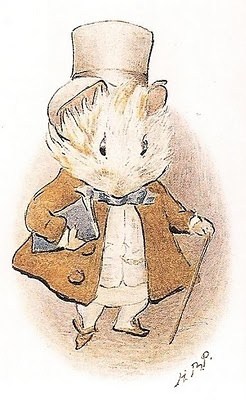
Curious about what the £85,400 painting looked like? Apparently it was a sequence of five vignettes associated with the “Amiable Guinea-pig.” Three of these were later redone for inclusion in Appley Dapply’s Nursery Rhymes (1917). We cannot know for certain whether Queen Elizabeth or even Mr. Chopps was the model for the Amiable Guinea-pig, only that this fine fellow was the first guinea pig to appear in Potter’s work — and he does have a long white ruff. 🙂
Guinea pigs are not prominently featured again in Potter’s stories until the publication of The Fairy Caravan in 1929, a book for older readers where a young guinea pig named Tuppenny runs away to join the circus. It was first published by David McKay in Philadelphia; Potter felt the story was too “personal and autobiographical” for her to comfortably allow publication in England. However, not wishing to relinquish copyright ownership in England, she later took 100 sets of sheets from the U.S. edition and had a local printer run off 100 copies of an altered first signature + a further leaf + a new dedication and had it plainly bound.
Miss Potter actually wrote “The Tale of Tuppenny” in 1903, but it was not published as a stand-alone book until the mid 80’s with Marie Angel’s illustrations (Beatrix had rewritten the tale as the first chapter for The Fairy Caravan). It seems things were always a little tricky when it came to guinea pigs.
Beatrix Potter: A Journal also contains a facsimile of a letter Beatrix received from her brother about a bat he’d left in her care when he was away at school. It sounds like the bat became ill and in the letter Bertram tells Beatrix to kill and stuff it (she was a teenager at the time).


*
: : KNOCK KNOCK KNOCK! : :
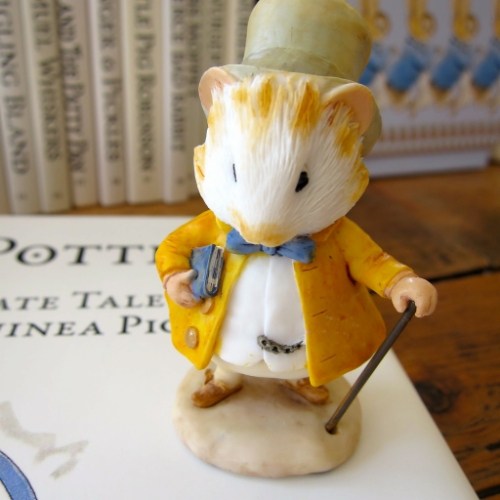
Look who’s here!
Hello, Amiable Guinea-pig!
I can see we need to write another post about our special visitor. Drop by on Friday for Potter nursery rhymes and some Easter-ish guinea pig fun in Beatrix, Part Two.
* * *

BEATRIX POTTER AND THE UNFORTUNATE TALE OF A BORROWED GUINEA PIG
written by Deborah Hopkinson
illustrated by Charlotte Voake
published by Schwartz & Wade Books/Random House, February 2016
Historical Fiction Picture Book for ages 4-8, 44 pp.
*Includes Author’s Note and links for further study
**Starred Review** from Kirkus
♥ Read an interview with author Deborah Hopkinson at Cynsations
♥ Click here for Deborah Hopkinson’s Beatrix Blog Tour
———————————————————–
Copyright © 2016 Jama Rattigan of Jama’s Alphabet Soup. All rights reserved.


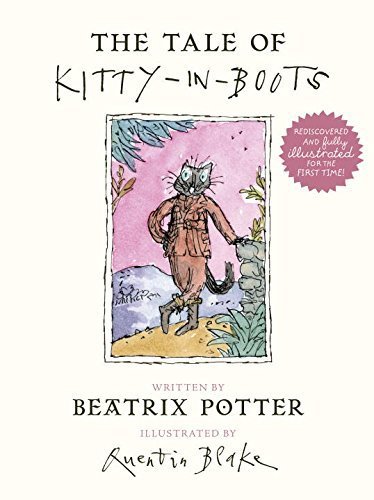

This is fantastic! I didn’t know about this publication! Thank you so much!!
LikeLike
It’s an exciting year for Potter fans!
LikeLiked by 1 person
So true! 👍👍👍👏👏👏👏🎉🎉🎉🎉🎉
LikeLiked by 1 person
What a dashing Amiable Guinea Pig! I am not bothered by the change to her age. Poetic license and all that.
When I was little, someone lost our kitten while they were keeping it for us. I didn’t take it well…
LikeLike
Sorry to hear about your kitten . . . I guess you know how Miss Paget felt. I guess we all have our own childhood animal traumas.
LikeLike
What a sweet looking little book! All the watercolor illustrations just really make it. And, the hilarious story of …um, unfortunate rodentia. The thing is, I think we ALL have a tale like this. We had hamsters who we shrieked to discover had given birth, and were casually eating their babies… trauma! Or, let’s not talk about the duck that somehow ended up in the dryer. He got too cold in the wading pool, and we were trying to help, because he was sneezing…
Some of us should just stick to writing stories, not keeping pets.
I love that you have her actual journal entry from that day! I hope you can visit her little retreat in Scotland someday; it’s another sweet little bowered house and garden…
LikeLiked by 1 person
OMG! Eating babies is somehow worse than trampling on them!! Shriek indeed!! The duck in the dryer sounds like it needs its own book. Ducks come with their own brand of humor anyway, and a first person account, written in quack-speak, would be hilarious. 😀
Sigh, I love sweet little bowered houses and gardens. . . actually want to LIVE in one of those.
LikeLike
Amazingly complete post. Thanks so much for all this information!
LikeLike
So glad you liked the post, Anna. It was fun to learn more about Beatrix’s encounters with guinea pigs, especially since Peter Rabbit usually takes center stage.
LikeLike
Thanks for this post.
Charlotte Voake seems like the perfect illustrator for a modern take on Beatrix Potter. Her illustrations have the same warmth, wit and vitality as Beatrix Potter, but with a looseness that makes them feel fresh for these times.
I can’t wait to see the Quentin Blake book and the Celebration book.
LikeLike
Yes, precisely — very fresh and modern style. 🙂
LikeLike
Thank you, Jama, for this lovely post on my book about Beatrix.
I’ve begun sharing this book at school author visits, with students writing letters of apology for imagined (or real) unfortunate tales of their own. I must say, some make Beatrix’s disaster seem quite tame in comparison! – Deborah
LikeLike
Hi Deborah!
Thank you so much for writing this book — fascinating stuff. What a great idea to have students write letters of apology — I imagine some of the real disasters are more traumatic than the made-up ones. In any case, we can all relate!
LikeLike
You are so bad for my budget, Jama! All of these wonderful books coming out this year! Thanks for rounding them up!
LikeLike
My budget is taking a hit too, Keri. I can’t resist Potter books!
LikeLike
I’m going to have to look for these beautiful new books–especially that top one looks wonderful. I have Beatrix Potter: A Journal and love looking through the scrapbook style pages, yet I didn’t think to pull it out for my own blog post. Thanks to you, though, I’ve just placed it by my chair. 🙂
LikeLike
It’s definitely a fun book. Hadn’t looked at mine for quite awhile, so it was nice to open the envelopes and lift the flaps again. 🙂
LikeLike